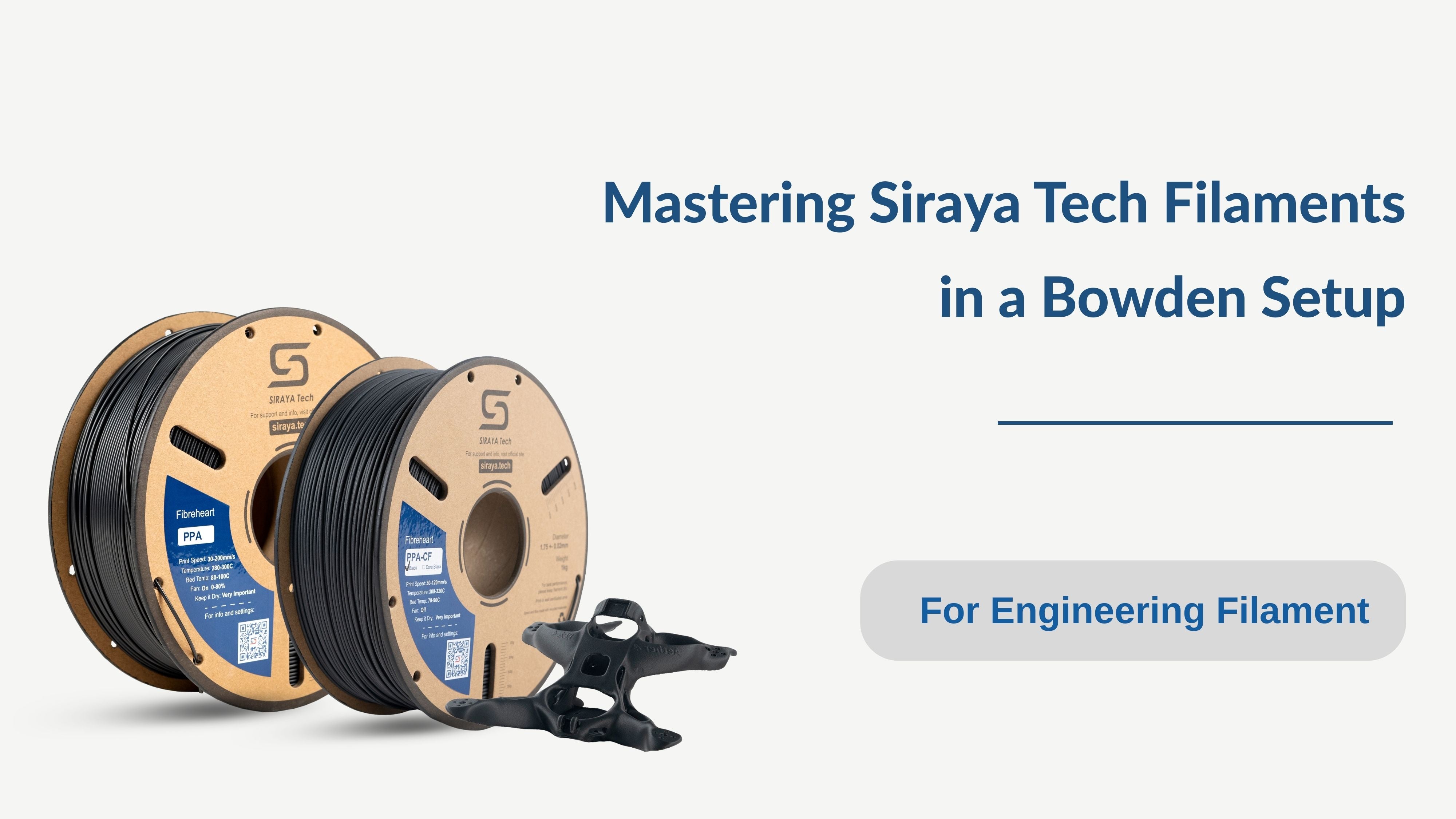Siraya Tech's engineering-grade filaments are designed for exceptional performance, offering high rigidity and strength for demanding applications. However, their unique properties require a fine-tuned approach, especially when using a Bowden-style 3D printer. Due to their stiffness, these filaments are more sensitive to friction and improper handling, which can lead to frustrating breaks in the Bowden tube.
This guide will walk you through the five essential steps to ensure a smooth, reliable, and successful printing experience.
Step 1: The Critical Foundation – Thoroughly Dry Your Filament
This is the single most important step for success. Our engineering filaments are highly hygroscopic, meaning they readily absorb moisture from the air. Printing with "wet" filament drastically increases the difficulty; not only will print quality suffer immensely, but the risk of the filament becoming brittle and snapping inside the Bowden tube also skyrockets.
-
How to Dry: Before every print, it is mandatory to place the entire spool in a dedicated filament dryer or a convection oven. Follow the specific drying procedures outlined in our user manual, as temperatures and times vary for each material.
-
Stay Dry During Printing: For the best results, we strongly recommend printing directly from a dry box that can either maintain a constant low humidity (e.g., below 15% RH) with heating or one that contains active desiccants.
-
Control Your Environment: Maintain a stable ambient temperature of 25–30°C. Avoid direct drafts, which can cause uneven cooling and lead to part warping.
Step 2: Optimize Your Filament Path
The key to preventing breaks is to minimize friction and eliminate any sharp bends in the path your filament travels.
-
Optimize the Feed Route: Ensure a Smooth Path: Carefully inspect the entire filament path—from the spool holder, through the extruder, and along the Bowden tube to the hotend. Eliminate any sharp bends or twists. A path with a smooth, gentle curve will significantly reduce the stress on the filament and prevent it from breaking.
-
Use a Smooth-Rolling Spool Holder: Make sure your spool holder rotates freely without any stuttering or resistance. Using a holder with ball bearings can dramatically reduce the force the extruder needs to pull the filament from the spool.
Step 3: Perfect Your Loading Technique
A proper loading procedure can prevent the initial snags that often lead to mid-print failures.
-
Trim the Tip: Before inserting the filament into the extruder, use a pair of flush cutters to snip the end at a sharp 45-degree angle. This creates a point that makes it easier to navigate through the extruder gears and into the Bowden tube.
-
Manual Pre-Feed: Manually straighten a short section of the filament (about 10-15 cm). Carefully guide it into the extruder until you feel the gears bite. Then, use your printer’s "load filament" function to slowly advance it through the tube.
Step 4: Fine-Tune Your Slicer Settings
Your software settings, especially for retractions, play a huge role in managing filament stress.
-
Retraction Settings: Bowden systems naturally require longer retraction distances. However, for stiff materials like our PET-CF and PPA-CF Core, fast and long retractions can generate immense stress. We advise reducing both the retraction speed and distance. Start with conservative values and print a retraction test to find the perfect balance that prevents stringing without overworking the filament.
-
Print Speed: Before you chase maximum speed, prioritize reliability. Start with a more conservative printing speed until you are confident that the feeding is stable. A successful print at a steady pace is always better than a failed one at top speed.
Step 5: Meet the Hardware Requirements
Printing with advanced materials requires capable hardware. Ensure your printer is equipped with the following:
-
High-Temperature, Abrasion-Resistant Nozzle: A hardened steel nozzle is a must. Carbon fiber filaments are abrasive and will quickly destroy a standard brass nozzle. We recommend a diameter of 0.4mm or larger to reduce the risk of clogging.
-
All-Metal Hotend: Your hotend must be able to safely reach and maintain temperatures of ≥300°C, as our PPA filament typically prints between 290–320°C.
-
High-Temperature Heated Bed: The build plate must reach ≥120°C and should be paired with a PEI or glass fiber surface. We recommend using a PVA-based glue stick or a dedicated 3D printing bed adhesive to enhance adhesion.
-
Enclosed and Heated Chamber: A heated chamber that can maintain a stable temperature between 60–80°C is essential to prevent warping caused by the material shrinking as it cools.
Conclusion: The Recipe for Success
In summary, mastering Siraya Tech engineering filaments in a Bowden system comes down to a simple but crucial formula: Perfectly Dry Filament + A Straight, Low-Friction Feed Path + Optimized Retraction Settings. By following these guidelines, you can unlock the full potential of these advanced materials and achieve outstanding results.

